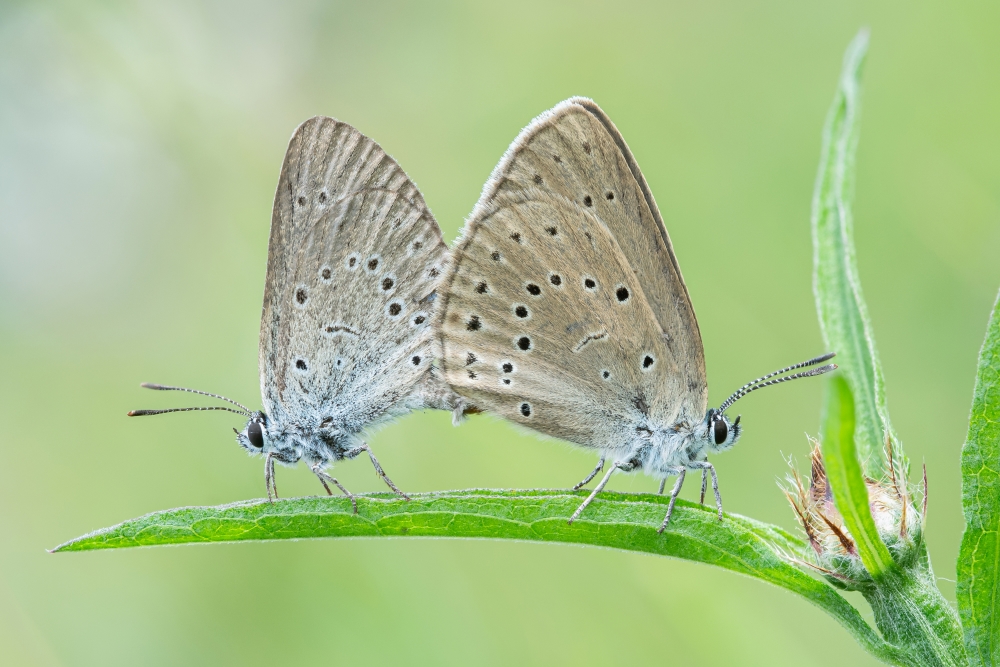Phengaris (=Maculinea) teleius is a mirmecophylus butterfly which parasite Myrmica spp. ant nests to complete its lyfe cycle. The adult butterflies lay the eggs on Saguisorba officinalis flowers, in which also the caterpillars will live and feed on during their first three weeks of life. Once they are enough developed they drop to the soil and start mimicking ant sounds and perform specific behaviours to be picked up by the ants to their nest a continue their life cycle. P. teleius caterpillars will live as ant parasites for almost one year until they completely develop and as adult butteflies leave the nest.
This species is considered endangered in Europe. In 1976 P. teleius got extinct from the Netherlands and in 1990 it was performed a successful reintroduction. Eighty-six butterflies were taken from a Polish population and translocated to Moerputten nature reserve. A difference of almost 30 butterfly generations between the original Polish and the reintroduced Dutch population offers a great and unique opportunity to study the local adaptations of P. teleius butterflies to their host ants and to detect ongoing co-evolution processes between parasite and host populations.
To get a better understanding of how reintroductions of parasites work, we are performing a multi-level comparison of source and reintroduced populations of P. teleius by studying 1) population genetics, 2) morphology of adult butterflies and 3) behavioural, chemical and acoustical adaptations of butterfly caterpillar to the Myrmica host ants.
